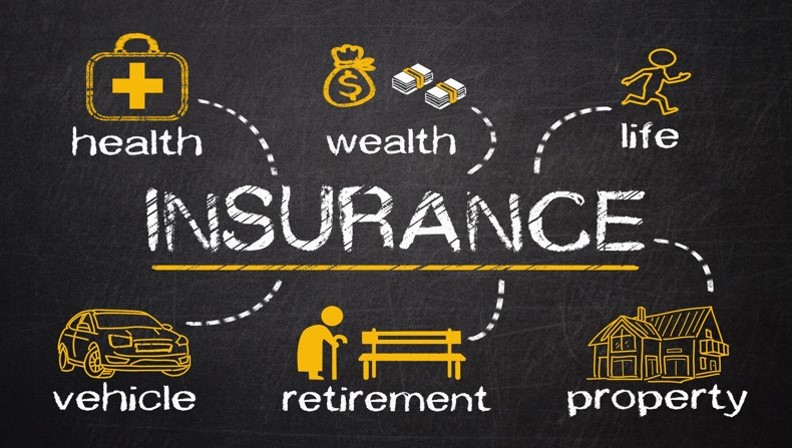Financial planning encompasses more than just budgeting, saving, or investing—it’s a comprehensive approach to managing money that ensures long-term stability and peace of mind. One often-overlooked yet critically important component of a comprehensive financial plan is insurance.

While it’s easy to focus on growing wealth, it’s just as vital to protect what you’ve worked so hard to build. Insurance acts as a protective barrier, shielding individuals and families from the financial fallout of unexpected life events. Whether it’s an accident, illness, natural disaster, or untimely death, insurance is the tool that transforms uncertainty into security.
Understanding the Basics: What Is Insurance?
At its core, insurance is a contract between a policyholder and an insurer, where the insurer agrees to provide financial compensation in case of certain specified losses, in exchange for regular premium payments. The foundational principle of insurance is risk pooling—many individuals pay into a system, and the pool is used to cover the losses of a few who face qualifying events. This shared risk model ensures that the financial burden of unfortunate events doesn’t fall squarely on one person’s shoulders.
Policies often include key terms such as deductibles (the amount paid out of pocket before the insurer steps in), policy limits (the maximum amount the insurer will pay), and premiums (the regular payments to maintain coverage). Understanding these terms is essential to making informed decisions about coverage and ensuring that policies meet your actual needs. Check out Saxo for more information.
The Core Connection: Insurance as a Pillar of Financial Planning
Insurance is not a standalone product—it’s a fundamental pillar of sound financial planning. When you consider saving for the future or investing in assets, those gains can be wiped out quickly by unforeseen expenses if you’re not properly protected. Without insurance, an unexpected illness, lawsuit, or disaster can derail years of financial progress.
For example, imagine building a robust investment portfolio over a decade only to see it liquidated to cover medical bills after an accident. That’s where insurance demonstrates its value: by assuming risks that are too large for individuals to bear alone, it preserves both short-term stability and long-term financial growth. A solid insurance strategy works hand-in-hand with your other financial efforts, forming a safety net that ensures your goals remain within reach, regardless of life’s unpredictability.
Types of Insurance and Their Role in Asset Protection
Life insurance is one of the most fundamental forms of protection, especially for individuals with dependents. Its primary function is to provide a financial cushion to beneficiaries in the event of the policyholder’s death. This money can cover funeral expenses, pay off debts, maintain a family’s standard of living, or even fund future education. Term life insurance offers coverage for a specific period and is often more affordable, while whole life or permanent insurance includes a cash value component, making it a potential tool for both protection and investment.
Medical expenses can be unpredictable and astronomically high, making health insurance a cornerstone of financial protection. A single emergency surgery or hospital stay can cost tens of thousands of dollars. Health insurance shields individuals and families from these costs, providing access to care without the threat of financial ruin. Beyond traditional plans, options like high-deductible health plans paired with Health Savings Accounts (HSAs) can be strategic tools. HSAs offer tax advantages and can act as both a short-term medical expense fund and a long-term savings vehicle. Additionally, supplementary policies such as critical illness insurance or long-term care insurance provide targeted protection for more specific and costly conditions.
A home is often the most valuable asset a person owns, and protecting it is crucial. Homeowners’ insurance covers the structure itself, personal belongings inside it, and liability in case someone is injured on the property. Coverage may extend to natural disasters, theft, and fire, although policyholders should always verify exclusions. Property insurance also includes coverage for renters, who may not own the building but still need to protect their possessions. Without such coverage, replacing items or covering damages out-of-pocket can be financially devastating.
Insurance in Different Life Stages
The type and amount of insurance you need evolve with your life. Young professionals starting their careers may prioritise health, auto, and renters’ insurance. They might also consider affordable term life policies, especially if they have student loans or co-signed debts.
As individuals form families, the focus shifts to life insurance, comprehensive health coverage, and property insurance. It’s also a time to consider disability protection, especially if children or spouses rely on your income. As children grow and assets accumulate, umbrella liability insurance can offer broad protection.
Conclusion
Insurance is not merely a financial product—it is a strategic necessity that enables peace of mind and financial resilience. In an unpredictable world, it offers a layer of certainty, ensuring that your financial goals stay on track even when life takes an unexpected turn. From covering medical expenses and replacing lost income to protecting property and preserving wealth for future generations, insurance plays a central role in any sound financial plan. By integrating the right policies at the right times and avoiding common pitfalls, you not only protect your assets but you also safeguard your future.














